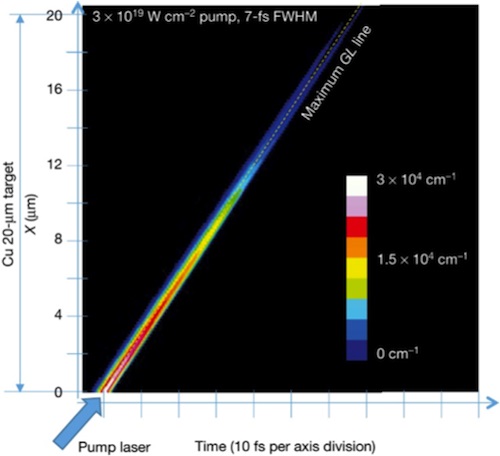August 27, 2015
Since the invention of the first lasers in the visible-light region, research has aimed to produce short-wavelength lasers that generate coherent X-rays; the shorter the wavelength, the better the imaging resolution of the laser and the shorter the pulse duration, leading to better temporal resolution in probe measurements.
Recently, free-electron lasers based on self-amplified spontaneous emission have made it possible to generate a hard-X-ray laser (that is, the photon energy is of the order of ten kiloelectronvolts) in an ångström-wavelength regime, enabling advances in fields from ultrafast X-ray spectrosopy to X-ray quantum optics. An atomic laser based on neon atoms and pumped by a soft-X-ray (that is, a photon energy of less than one kiloelectronvolt) free-electron laser has been achieved at a wavelength of 14 nanometres.
Here, the researchers have used a copper target and reported a hard-X-ray inner-shell atomic laser operating at a wavelength of 1.5 ångströms. X-ray free-electron laser pulses with an intensity of about 1019 watts per square centimetre tuned to the copper K-absorption edge produced sufficient population inversion to generate strong amplified spontaneous emission on the copper Kα lines.
Furthermore, the researchers have operated the X-ray free-electron laser source in a two-colour mode, with one colour tuned for pumping and the other for the seed (starting) light for the laser.
Abstract URL:http://www.nature.com/nature/journal/v524/n7566/full/nature14894.html















